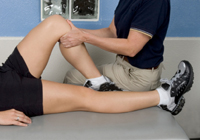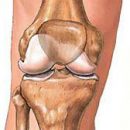What is synovit? What are the causes of synovita? What is the forecast for this disease? Answers to these questions you will find in the article.
Content
What is synovit
 Sinovets are characterized by inflammation of the synovial shell, limited to its limits and accumulation of traffic in the cavity lined by it (in the synovial bag, the vagina of the tendon, articular cavity). The joints are amazed - the knee, the elbow, the ray-cranky, ankle. Sinovit is developing mainly in one joint, less often at the same time in several joints (for example, with a polyarthritis).
Sinovets are characterized by inflammation of the synovial shell, limited to its limits and accumulation of traffic in the cavity lined by it (in the synovial bag, the vagina of the tendon, articular cavity). The joints are amazed - the knee, the elbow, the ray-cranky, ankle. Sinovit is developing mainly in one joint, less often at the same time in several joints (for example, with a polyarthritis).
Causes of synovita
Causes of synovists are diverse. They are divided into two large groups - infectious and aseptic. Among aseptic synovites are dominant, then allergic, neurogenic caused by endocrine disorders, and. The cause of infectious synovites can be pathogenic microorganisms that cause nonspecific (staphylococci, streptococci, pneumococci, etc.) and specific (tuberculosis mycobacteria and others.) Inflammatory processes in the synovial shell, where they fall from the environment through the wounds with contact, hematogenic or lymphogenic pathway from infectious foci inside the body.
By the nature of traffic, synovites are divided into serous, serous-fibrinoid (adhesive), hemorrhagic and purulent. On clinical flow synovits are sharp and chronic.
Forecast of the disease
The prognosis for synotes depends on the state of the body and the virulence of microflora, as well as from timely and proper treatment. Along with full recovery (preservation of the movements in the joint), which is more often observed in the serous and allergic synotte, it is possible to develop tug-excitiousness or complete immobility in the joint. With a serious flow of acute purulent synovitis, a threat is often created for the life of the patient in connection with the development of sepsis. Of the specific inflammatory processes in the synovial shell, more often there are tuberculous and syphilitic lesions.









